https://www.youtube.com/watch?v=6NqLd2j2aVM
How to Reverse Sear a Steak _ Serious Eats
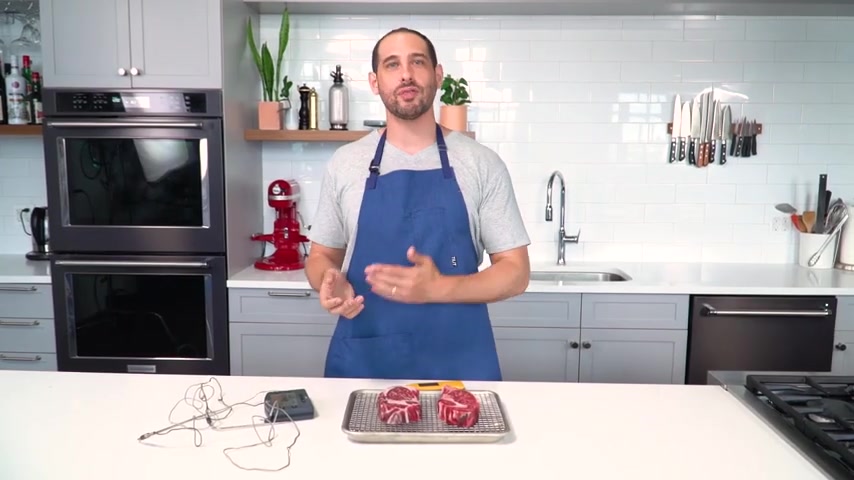
I am about to reverse sear two gorgeous aged rib eye steaks .
Traditionally , we would cook a steak by throwing it into a hot pan and then maybe finishing in the oven until it reaches its final internal temperature .
Reverse Sear kind of flips that on its head .
It sort of borrows a page from the sous vide book .
The steaks go in like this into a very low oven and they very slowly come up to temperature and only when in the center , the steaks have reached your desired temperature .
Do you take them out and then you sear them at the end to get the nice brown flavorful crust on the outside ?
Why do we do this ?
Well , for one thing , it gives us better control and a more foolproof method than if we went from high heat right from the start .
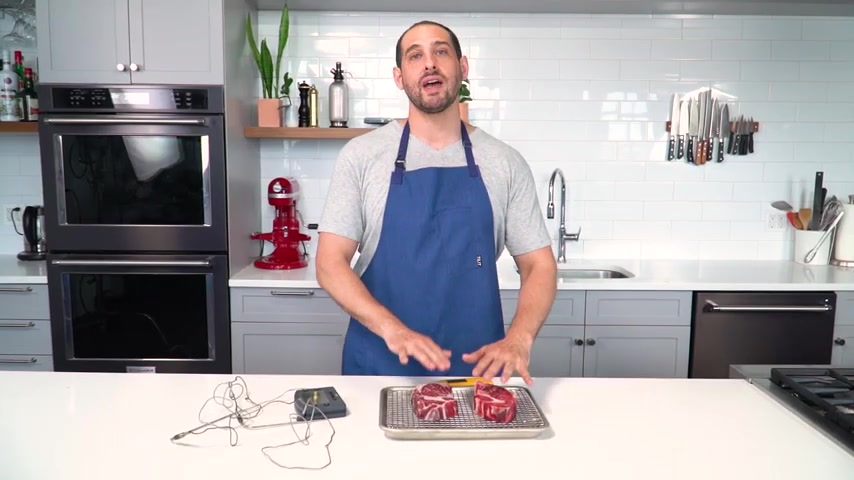
This slows everything down by you all a lot more time and your margin of error is much bigger .
The other really great thing about the reverse sear is because these steaks are hanging out in a dry hot oven , the surface will continue to dry out the whole time it's in there .
Dryness is what you want , when it comes time to sear the steak in a pan , a probe , thermometer will track the temperature of your meat while it's in the oven .
And I'm gonna just guess at where I think the center of this steak is .
Yeah , I , about there if you're cooking a bone in steak , just make sure you don't put the thermometers probe up against the bone .
That's gonna really throw off your readings .
If you don't have a probe , thermometer , it's ok .
You just use an instant thermometer to monitor the progress of your steaks .
And I'm gonna set an alarm 105 F .
I'm aiming for 1 15 .
But this gives me a 10 degree head start to make sure that I don't mess up .
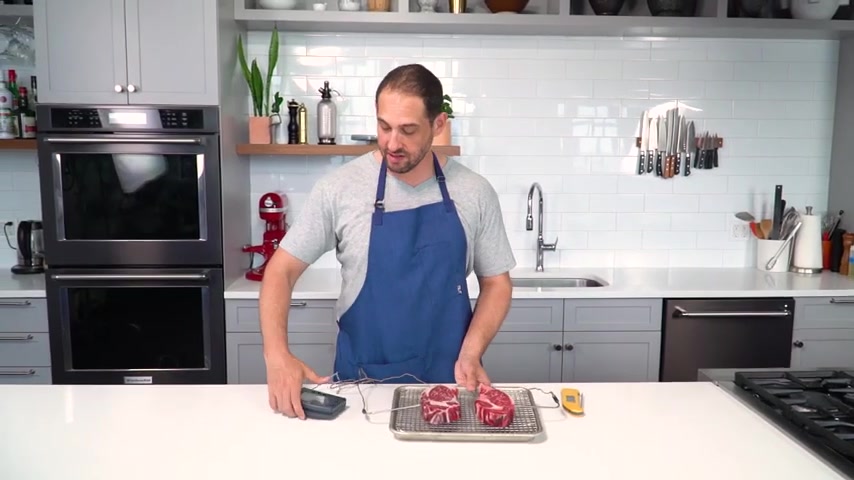
Ah , ah , it's time to put the beef in the oven and let it do its thing .
And then this has a magnet .
I can stick , it's reading 49 F on the nose .
The other one is a little bit warmer .
53.3 F .
And I have an instant reed thermometer that I will use to confirm what these probe thermometers are telling me by taking a few other readings and a few other parts of the sticks just to make sure that I've got it right .
The thing is with the reverse Sears , the steaks are gonna jump a little bit more when they're out of the oven .
So we wanna pull them out a little before whatever a real desired final temperature is for rare .
That means taking them out when they're about 105 F in the center for medium rare .
That means pulling them from the oven when they're about 1 15 degrees Fahrenheit in the center and four medium , 1 25 et cetera , et cetera .
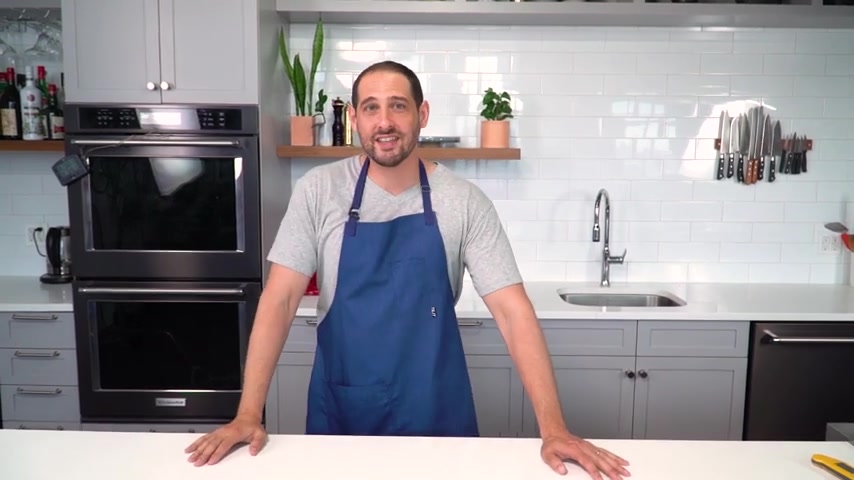
That doesn't mean medium is 100 and 25 F medium is actually warmer 1 31 35 more up there .
But that's gonna happen in the pan when they come out of the oven .
Sometimes it's slow us at the beginning and you think you get a sense in your head of what the rate of cooking is , starts speeding up .
I think it does .
I've never tested that empirically .
I'm pretty sure it starts speeding up .
That's been my experience .
Keep it , keep an eye on your meat any second that alarm is gonna sound .
My steaks are right at 1 15 or just a hair shy of it .
And I've already got my cast iron pan preheating .
I'm actually gonna crank the heat .
Now , I'm gonna get a tablespoon of oil in the pan .
I want this oil smoking hot .
My goal here is to preserve that kind of perfect doneness in the center of the steak .
So I really want to get the sear on this meat as quickly as I can so that I don't start over cooking the exterior that and the whole point of this method is to have a nice even doneness gradient .
So I really don't wanna do anything that's gonna work against that .
Uh-huh .
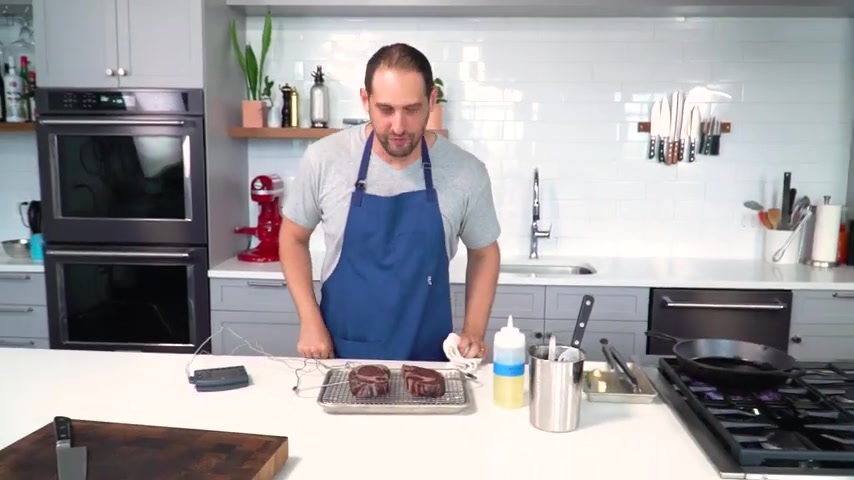
Now , these are not particularly beautiful at the moment .
They look like sad gray hunks of beef .
That's why we're gonna sear them .
Now , I'm gonna add a little butter to the pan for more flavor , but you don't have to .
I'm also going to add a time spring and some garlic to the pan to quickly get some more flavor into the fat in the pan .
Also that you don't have to do that's all optional , but it's , it's a nice touch .
If you can do it , then we go steak butter .
Garlic time swirl that around , press it down , make sure the steak is making full contact with the pants .
You don't end up with a , a little raised portion that didn't get brown enough 45 seconds a minute , really as quick as you can any longer .
And you might as well have just been butter basting in the pan the whole time because you'll start to get that done this gradient .
I'm gonna flip it .
There you go .
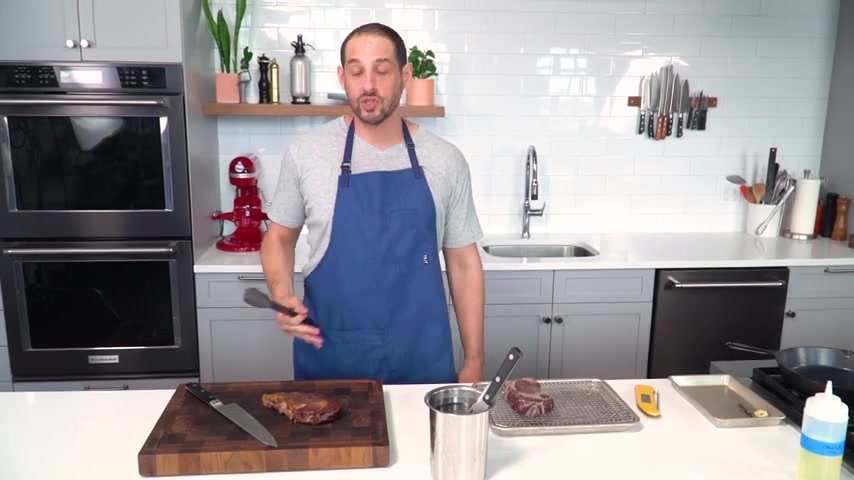
Sear the edge .
I see that how that's nice and brown there .
Now , a good kill the heat .
Now , reverse here doesn't really need to rest .
It's so low and slow coming up at the temperature that you don't have the same issues when you're doing a high heat method of giving the steak a chance to re absorb juices , you basically can cut into it whenever you're ready .
Hm .
I really got so tender , so juicy , so beefy with that great funk because I splurged on an age stick and , but I splurged .
I mean , seriously splurge .
Are you looking for a way to reach a wider audience and get more views on your videos?
Our innovative video to text transcribing service can help you do just that.
We provide accurate transcriptions of your videos along with visual content that will help you attract new viewers and keep them engaged. Plus, our data analytics and ad campaign tools can help you monetize your content and maximize your revenue.
Let's partner up and take your video content to the next level!
Contact us today to learn more.